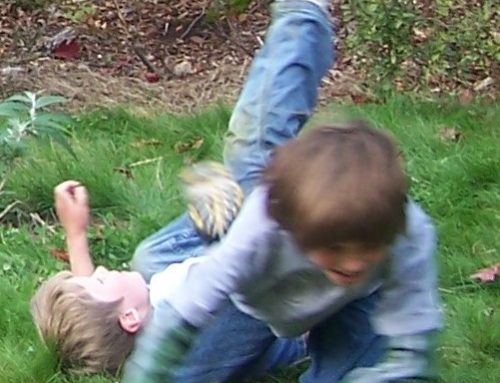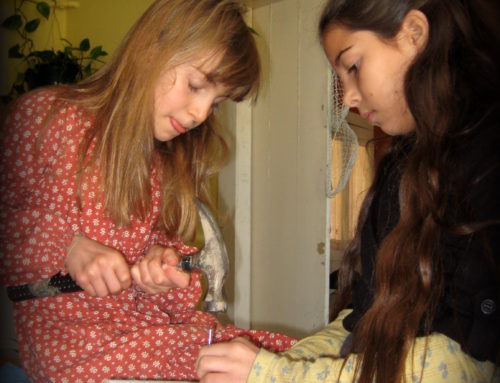Children’s Freedom of Movement
The issues of space and the control of a person’s body also extend to the control of their range of movement. Not only do we invade and control children’s physical bodies/space but the way that children can move about in the world is often severely limited. Children have their movement restricted and are not free to move about as they please. They may be confined to a specific room (such as “the toddler room”) or a building (such as “the school”) but in the way we have constructed childhood, kids have a very limited scope in which they can safely move about in the world. We have constructed childhood in such a way that it is often unsafe and impractical for children to have more than a limited range of movement. We can begin to reconstruct society and environments in ways that are safer for kids and increase the areas which kids can traverse on their own.
Sidney (4) came home from a family trip to the grandparents where he had to ask someone if he wanted to do anything. Here he can come and go from the house as he pleases, find food when he is hungry and generally has a great deal of freedom of movement.
limitation at every turn…
What a contrast from kids in mainstream society that find their movement limited in every direction. I think of the children at the daycare center where I worked who spend all day every day confined to a center. It’s amazing how severely limited their autonomy is, how much they are dependent on the help and permission of others; nearly everything they do and everywhere they go is determined by adults. They go outside only at specific times. They eat at lunch time and snack time, rest at nap time and play with certain toys only when they have been granted permission. Sidney is the same age as many of those children but he comes and goes from the house as he pleases with a large area of land and woods to explore. If he’s hungry he can get himself a snack and when he wants to do something he chooses the activities he wishes to engage in. Maybe it’s playing Legos or reading books or maybe its catching frogs outside. Whatever the activity, most of the time he is free to choose what he wants to do and then do it, not even considering that he needs to ask someone for permission. There’s a stark contrast between his life and lives of the kids at the daycare center. How different their experiences of life might be if they did not have so many restrictions on their lives. Maybe some of the kids with energy or behavior “problems” wouldn’t have such problems if they were allowed to move about more freely in the world. It’s amazing what a small scope children now have, both in ability to meet their own needs and in the physical area and space they are allowed to explore on their own terms.
A greater sense of freedom…
At a family homestead and community of sorts where I spent much time, that scope is much larger:
I was watching Ana (1 ½) walk across the lawn and thinking about the distance that most small children are allowed to walk. Certainly not far and most often with someone right along with them. The yard? The playground…? what other distances do such small children get to traverse on their own or even at all?
Most of the time they get carried or are at least being tugged along in the direction that the adult wants to go. Even older children, depending on their life situation, are often confined and dependent on adults to really go anywhere.
Ana has lots of space in which she can walk and wander herself. She walks from the house to the cabin and back again doing her own exploring and investigating. When we take walks places she does a lot of walking on her own (rather than being carried), sometimes than her older brother does. One day, though, as we prepared for a walk to A Glade, which is about ten minutes away through the woods, Sidney (4) left before us and walked the entire way by himself.
It never occurred to him that he should be worried or that this would be too far for him to go on his own. And the parents also having faith and confidence in his ability, did not worry but just followed down the path after him.
How can we we create opportunities and environments that support kids’ autonomy and independence, allowing them to meet more of their own needs? Are the restrictions, precautions and permissions we require of them warranted or are there ways to redesign our environment and our thinking to support kids in trusting themselves, making their own decisions and meeting their own needs?


Leave A Comment